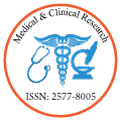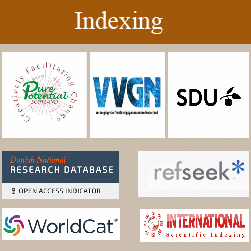Molecular Bases for Pharmacotherapy of COVID -19
Author(s):
Anna Sh Archvadze*, N. Gongadze, I Migriauli, Candidate K Chirakadze and T Mgeladze
The most large-scale challenge aroused at the beginning of Y2020 was the global spread of the coronavirus disease 2019 (COVID-19), caused by a zoonotic beta-coronavirus. One year after we have nearly 270 thousand confirmed cases with mortality rate 1.3% in Georgia, and almost 120 billion confirmed cases with mortality rate 2.2% worldwide.
As it is known, COVID-19 is triggered by coronavirus species 2 or SARS-CoV-2, which inters in the human body by binding to the angiotensin-converting enzyme 2 (ACE2) molecule on the host cell membrane via the viral spike protein and expresses complex pathological changes in many organs linked with vascular injuries. The most severe expression of this disease exposed by microscopic examination is bilateral diffuse alveolar damage with fibroblasts exudates, indicating Acute Respiratory Distress Syndrome (ARDS). Immune system plays crucial role in tissue damage. As clinical researches showed, the number of peripheral CD4+ and CD8 + T cells were significantly reduced, while their activity was hyper-expressed as evidenced by the high proportions of HLADR (CD4 3•47%) and CD38 (CD8 39•4%) double-positive fractions. Moreover, there was identified an amplified concentration of highly pro inflammatory CCR6+ Th17 in CD4 T cells. This date explains that severe tissue injury in later stages of COVID-19 is depend on the immune system abnormalities, but not on SARS-CoV-2 direct cell destruction.
In the same time the scientists and doctors found out abnormalities in coagulation function in most of the severe COVID-19 patients, which were expressed in elevation of D-Dimer level and prolongation of prothrombin time, some of whom terminated in disseminated intravascular coagulation (DIC), deep venous thrombosis (DVT) or fatal pulmonary thromboembolism (PTE). At the later stage in some severe patients it was identified thrombocytopenia as a result of excessive platelets consuming, which significantly affected on treatment and prognosis.
More than 300 drugs are used for the treatment of COVID-19 worldwide. Now, the most popular treatments include Remdesivir, Hydroxychloroquine, Betamethasone, Tocilizumab, anti HIV drugs, and convalescent plasma. In the same time, WHO supports vaccines distribution for immunization. Currently, almost 8 vaccines are approved by different countries and more than 180 vaccines are under the clinical trails.
Conclusion & Significance: Up till now it is challenging problem to combat SARS-CoV-2 with not well-defined origin and inexplicable biological characteristics as well as to control a pandemic of COVID-19 with such a high R0, a long incubation period and different disease outcomes. Unfortunately, we have limited understandings of particular mechanisms running to abnormal expression of immune system and coagulation processes. In the same time, we don’t have complete picture of vasculopathy leading to the tissue injury and patient death. Therefore, it is problematic to manage SARS-CoV-2 induced processes successfully using available drugs with no significant restoring effect on the organ damages in severe COVID-19 patients. So, we need new targets and new drugs for the prophylaxes and treatment of COVID-19 even we have vaccines available.



